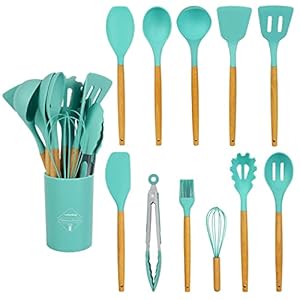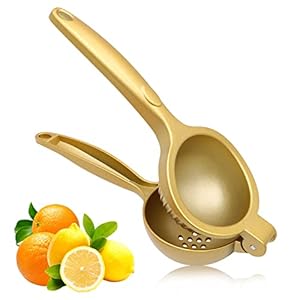
My summer time isn’t full till I devour a ripe, juicy peach standing on the kitchen sink. It’s a second I sit up for all 12 months lengthy, and I savor every chew of the fruit: its tender flesh, and, sure, even its tender, fuzzy exterior. I contemplate the latter a necessary a part of the peach-eating expertise, although many are downright turned off by a furry peach. My recommendation for these of us? Search out its fuzzless counterpart: the nectarine.
A nectarine is actually a bald peach, however, because it seems, going bald has a number of different key results on the fruit. Peaches and nectarines differ in style, dimension, how inclined they’re to ailments, and the place they’re grown, as a number of consultants advised me. And whereas peach fuzz—or the dearth of it—could look like a attribute that’s solely pores and skin deep, it performs a task in all these different key variations, too.
How Peaches and Nectarines Got here To Be
Getty Photographs / julichka
Peaches: Based on Harold McGee’s e-book On Meals and Cooking, each peaches and nectarines are native to China, and ultimately made their option to the Mediterranean round 300 BCE. The fruit unfold throughout Europe and arrived in St. Augustine, Florida with the Spanish within the 1500s. These early peaches had been nothing like what we see at grocery shops as we speak, says agricultural historian William Thomas Okie.
The primary peaches within the US, referred to as “Indian Peaches” by colonists, had been fairly furry and tough to move, as they couldn’t keep recent for lengthy with out modern-day refrigeration. Based on Okie, whereas Native Individuals did domesticate these first white-fleshed fruits, European colonists used them for hog fodder, in addition to for brandy. It wasn’t till round 1850—when a bigger, yellow-fleshed peach selection from China, referred to as the Chinese language Cling, was dropped at the US—that fruit breeders started producing the peaches we all know as we speak, just like the Elberta peach or the Bell of Georgia, says Okie.
Getty Photographs / eli_asenova
Nectarines: There’s a frequent false impression that nectarines are a cross between a plum and a peach, however that’s in no way the case. Nectarines are literally the results of a pure mutation inside peaches that enable them to develop with out their signature fuzz.
“It’s only a kind of peach,” says Thomas Gradziel, a geneticist and professor on the Division of Plant Sciences on the College of California, Davis. “It’s not a unique fruit.” A single recessive allele permits for nectarines to develop with out the trichomes, or fuzz, discovered on peaches. In actual fact, the 2 are so carefully associated that some farmers have seen nectarines develop on the identical bushes as peaches. A fruit could develop with half of its exterior fuzzy, and the opposite half easy, says Gradziel.
The nectarine that we’re most aware of, nevertheless, didn’t come to be till 1936, when California fruit breeder Fred Anderson crossed a white-flesh nectarine with a yellow-flesh peach. That crossing made Anderson known as the creator of the modern day nectarine.
Peaches vs. Nectarines: What’s the Distinction?
Past simply being hairless, peaches and nectarines differin a number of key methods:
Look: Sometimes, nectarines are barely smaller than peaches, says Gregory Reighard, a horticulture professor at Clemson College and member of the varsity’s “Peach Staff” cooperative extension. That’s as a result of the recessive allele that’s chosen when making a nectarine can be tied to genetic traits that create smaller fruit, so it’s typically tough to get nectarines to match a peach’s dimension.
The pores and skin of a nectarine is thinner than that of a peach, notes Reighard. That thinner, smoother pores and skin makes it simpler for nectarines to blemish, which is commonly a flip off for potential clients. The nectarine can also look redder than a peach, however that’s possible because of the lack of fuzz. Inside, peaches and nectarines could have both yellow or white flesh.
Style: Whereas nectarines could also be characterised as a sort of peach, they do style fairly completely different—and that’s additionally because of the variations of their pores and skin. A nectarine’s compact, waxy pores and skin tends to carry on to taste compounds higher than a peach does, says Gradziel, permitting for much less oxidation than in a peach. “As a result of the oxidation is completely different, that unstable profile goes to be completely different,” he says.
The flavors of each peaches and nectarines will fluctuate extensively relying on the colour of their flesh. Based on Gradziel, each white peaches and nectarines are usually sweeter and fewer tart than their yellow counterparts. White peaches and nectarines can even have extra of a honey observe, whereas yellow peaches and nectarines will pack a bit extra acidity. White and yellow nectarines are barely more alkaline than peaches on the pH scale, giving them a sweeter style. They can be extra fragrant—virtually floral, relying on the range—and, even when ripe, have a barely firmer flesh than ripe peaches. Peaches of each colours additionally are likely to style a bit extra luscious, with tropical fruit notes.
Each peaches and nectarines are available in “clingstone” or “freestone” varieties, which refers as to whether or not the fruit’s pit is connected to the flesh. Clingstone peaches are mostly utilized for processing peaches—like your typical canned and puréed peaches, in addition to jams—because of the meltier texture of their flesh. Freestone fruit, nevertheless, is what you’ll almost definitely discover in grocery shops. (An area farmers market, nevertheless, could have each clingstone and freestone varieties.) Freestone peaches and nectarines are likely to have firmer flesh than their clingstone counterparts.
Agriculture: The season for each peaches and nectarines within the US runs from late April to mid-September, with 95% of the country’s nectarines grown in California. The drier climate is extra conducive to rising nectarines commercially than in different peach-growing states, like South Carolina, Georgia, and New Jersey, because the fuzz on a peach makes them extra weather- and disease-resistant.
“These hairs aren’t there to make them cute,” says Grazdiel. “It offers [the fruit] insect resistance. It really adjustments the microclimate round that peach, so it tends to make them hotter or cooler, relying on the daylight or the ambient temperatures and such.”
As a result of nectarines blemish simply and are tougher to ripen, peaches dominate industrial agriculture production in the US: 74,400 acres are devoted to producing peaches throughout the nation, whereas solely 13,000 are for nectarines. The nectarines in your big-box grocery retailer are almost definitely from California, even if you happen to dwell in a big peach-producing state like South Carolina, says Reighard. To trace down native nectarines, you’ll want to hunt out roadside farm stands, CSA memberships, and small orchards.
How you can Substitute Peaches for Nectarines and Vice Versa
As a result of nectarines are a sort of peach, they can be utilized equally, says Reighard. “No matter you are able to do with a peach, you are able to do with a nectarine.”
Peach Upside Down Cake
Yellow-flesh peaches and nectarines are what’s mostly used for baking in turnovers, cobblers, and cakes, since they’ve extra acidity to stability out further sugar than white flesh peaches and nectarines. The yellow flesh of those fruits additionally provides coloration to the ultimate product.
When substituting nectarines for peaches, you’ll additionally wish to needless to say nectarines are usually a bit smaller, so test that the variety of nectarines you’re utilizing is comparable by weight to what the recipe recommends. For those who do experiment with white peaches and nectarines, simply know that they might profit from added acidity or saltier parts to stability out their sweetness, as you’ll be able to see on this recipe for pickled nectarines, in addition to this crisp, which provides blueberries for a little bit of tartness.
The Takeaway
Nectarines are peaches that lack fuzz. Due to that, nectarines are usually a bit sweeter and fragrant, with an virtually honey observe, whereas peaches have a extra complicated, acidic taste, in addition to notes of tropical fruit. (In the end, how acidic or complicated the fruit is will rely on the precise selection, although.) Nectarines are additionally tougher to develop in wetter climates, as they’re extra inclined to illness.
Yellow-fleshed peaches and nectarines are mostly utilized in cooking and baking, as these are likely to have extra acidity than their white-flesh counterparts. That additional tartness helps stability out the added sugar in lots of baking recipes. When utilizing nectarines, needless to say these are usually smaller than peaches, and will profit from incorporating extra acidic parts, comparable to lemon juice. White-flesh nectarines and peaches can be utilized in cooking, however are mostly eaten recent within the US.
Trending Merchandise











